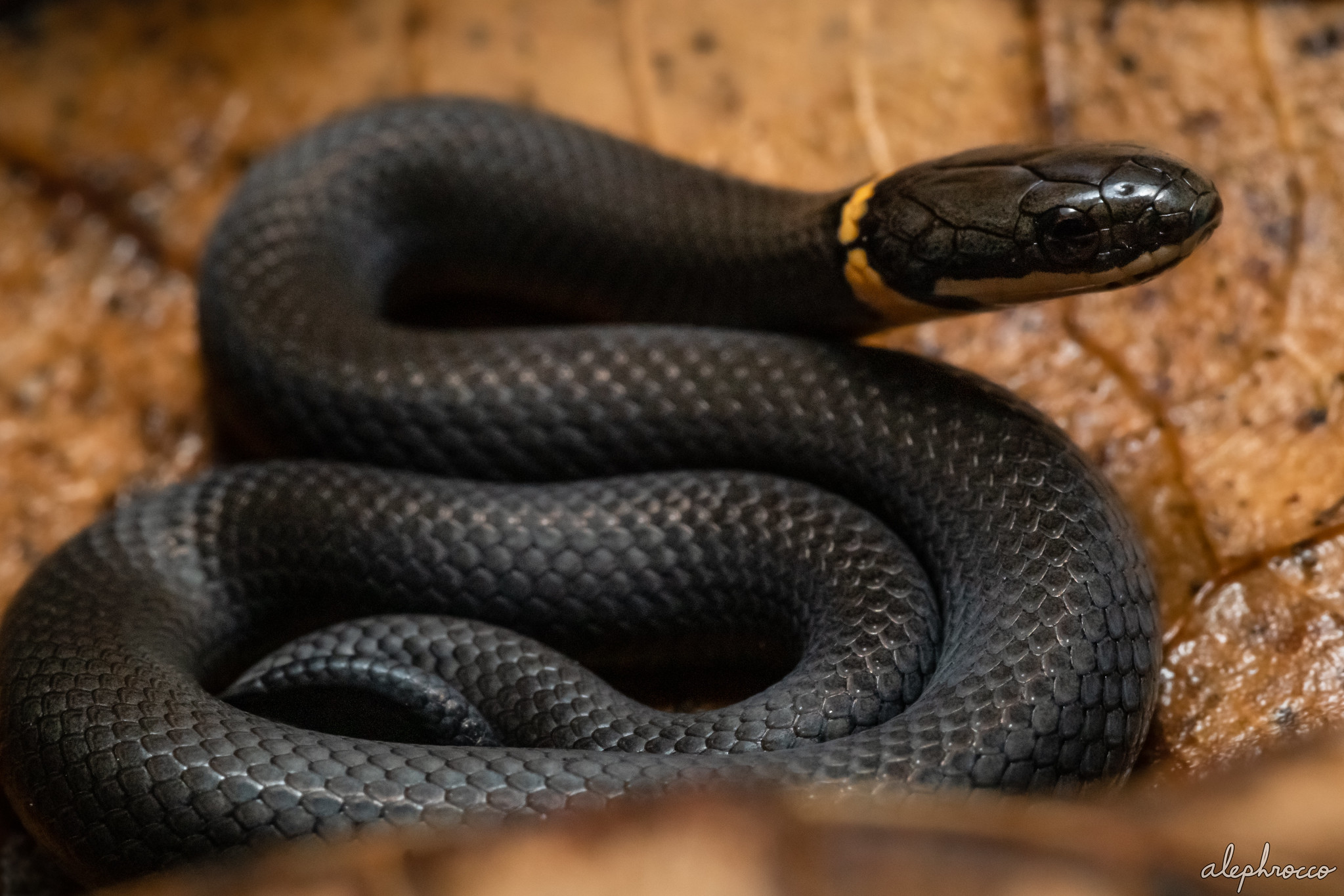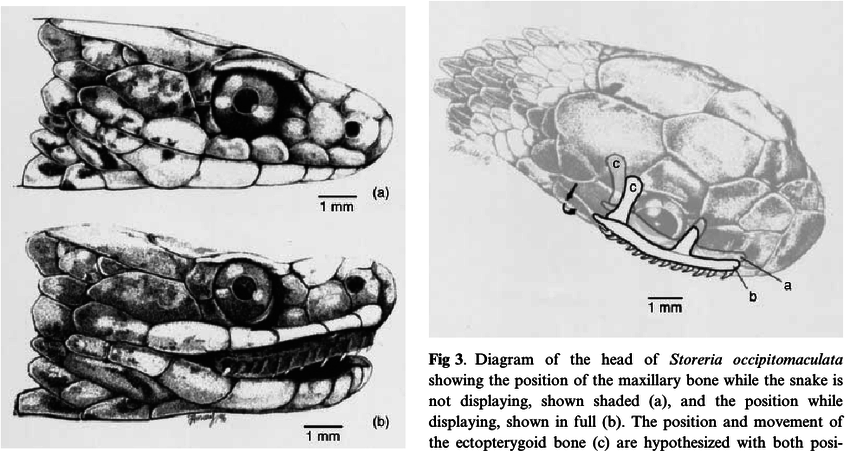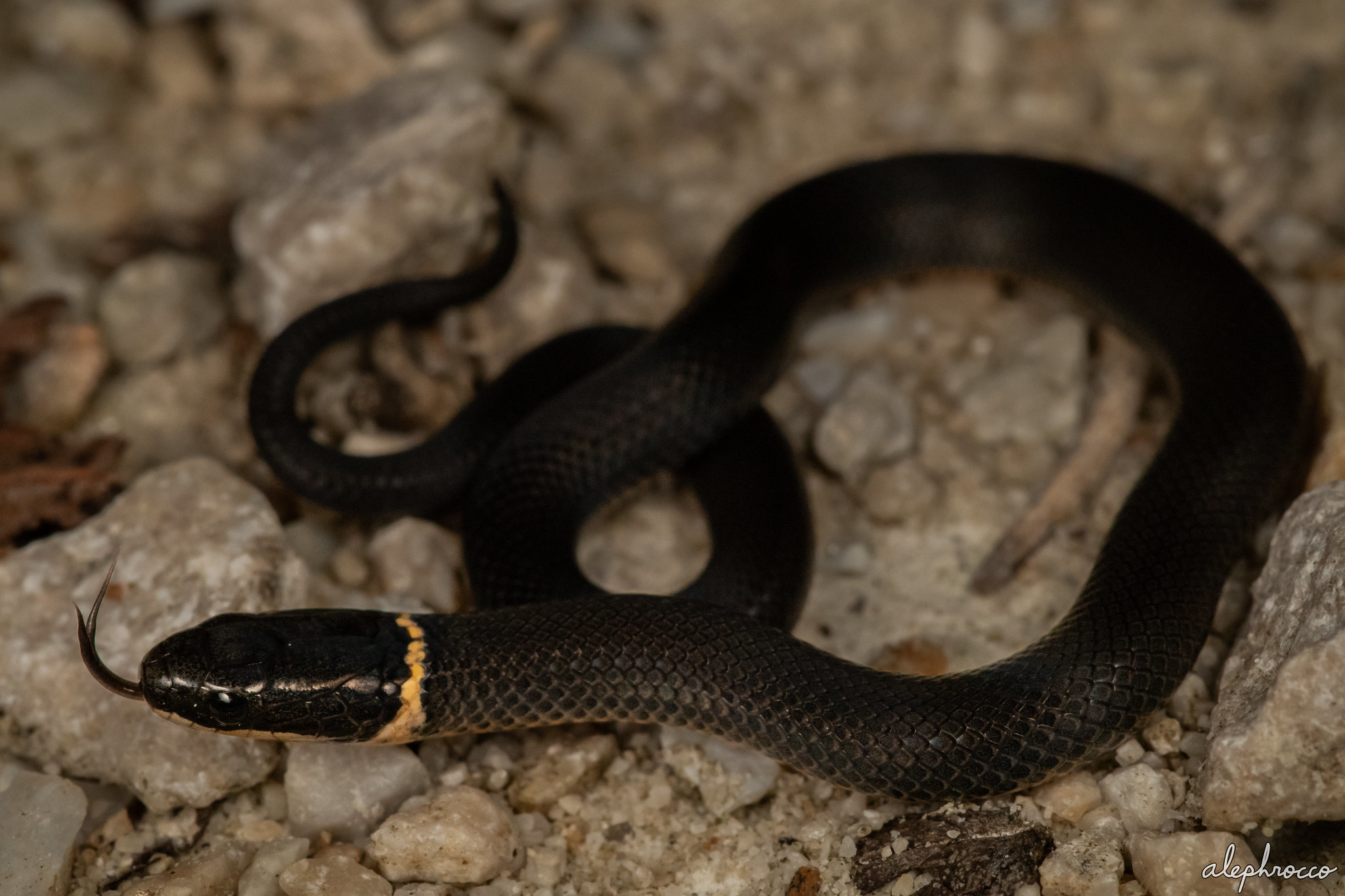

04/29/2020: Midland brown snakes (Storeria dekayi wrightorum) are another common snake in the eastern U.S.. They are a small species only about 30 cm long, characterized by a pale brown color with a faint stripe on the dorsum and dark checkered splotches on the sides which sometimes connect to form horizontal bands. Brown snakes select refuges under moist woody debris by day and emerge during crepuscular hours to forage. In comparison to other sympatric colubrids, brown snakes have a more boxy head (though it is much less obvious in juveniles). When I first encountered this species, it reminded me superficially of other gastropod-eating snakes in the Neotropics, and to my surprise after digging in the literature, snails and slugs also make up most of its diet.

If you’ve ever tried pinching a slug or snail to pick it up, it’s not an easy task. A short head in gastropod-eaters may serve to increase grip strength through more compact muscle attachments. But that alone isn’t enough. To consume slippery and slimy prey items, Storeria and other gastropod specialists are equipped with slender and recurved rows of teeth. By rotating their heads to the side, they use their hook-like teeth to latch on effectively. For snails in particular, this prevents them from slinking back into their shells. Scanning electron micrographs of the teeth remind me of the thorns of Acacia mellifera, another organism whose grasp is inescapable.
In at least some species of Storeria, documented antipredator displays include lip-curling and teeth-bearing, an unusual defensive behavior for snakes. One interesting hypothesis is that lip-curling was co-opted from feeding behaviors which serve to squeeze enzymes from the the Duvernoy’s gland to aid in subduing prey. In many gastropod specialists (e.g. Sibon, Sibynomorphus, Dipsas, & Duberria), enzyme secretion from the Duvernoy’s glands indeed aids in immobilizing mollusc prey. Although not as well-studied, Storeria likely follows suit.



03/23/2021: Courtship of two dekay’s brown snakes on a windy day. Over the course of an hour, the pair moved only a couple of feet, and the male took the utmost care not to overstep his boundaries as he progressed. Just to give you an idea of how slow this process can take, the footage here is sped up by more than 25 times the actual speed! The two snakes would at times remain motionless for over 10 minutes, until they resumed their ‘breakneck chase’. The female was averse to the male’s touch; each time the male contacted his head with the tip of the female’s tail, the female would immediately move away. Also, whereas the male’s tongue flicks were rapid, the female’s were prolonged and slow, similar to what I have observed in snakes reacting defensively to my presence. All in all, these behaviors suggested to me that the female was unreceptive towards the male, but it’s possible they may have ended up mating later on in the evening. By time I left, the two had moved off of the trail and lay mostly hidden under the leaf litter, and the male rested a bit closer with the female than he had ever before. A few more hours of hope and drama into the evening, and maybe the male eventually proved himself persistent enough!


09/11/2020: Neonate ringneck snake (Diadophis punctatus); photographed after pursuit [3]
